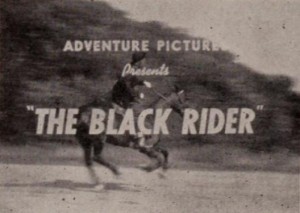
"For Louis McMahon, making movies must seem to be as natural as breathing — only far more fun. It stands out in his work, from the first dynamic opening of The Black Rider to the last dramatic gun fight, in which, inevitably, the villain is vanquished and the hero left triumphant. For this film goes back to first principles of the motion picture, both in its "horse opera" subject matter and in its unfailing sense of movement and compelling excitement. True to the old traditions, this young producer has turned seemingly impossible obstacles with cinematic trickery and imagination. For the present, his technical skill has not always been equal to his creative ambition, but the genuine urge is there in abundance." Movie Makers, Dec. 1941, 566-567.
"Al Londema's 'The Black Satchel,' is a pretentious photoplaylet in 8mm color, showing good camera work and direction." American Cinematographer, May. 1952, 224.
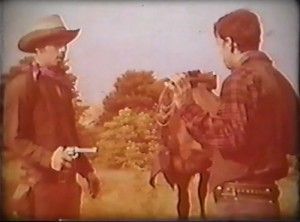
"Handsome and hard hitting, Bold Badmen is a Western filmed as Westerns should be filmed — without romance, without singing, but with plenty of shooting, plenty of horsemanship and plenty of very tough looking and acting characters. Casimer V. Zaleski knows that movement makes a movie. Bold Badmen is crammed with both kinds — physical and cinematic. Unfortunately, the physical condition of the film (which was inexcusably scratched and dirty) did much to restrain the enthusiasm of the judges for a melodrama of real power." Movie Makers, Dec. 1949, 468-469.
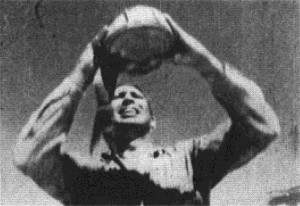
"A story of two bad guys on the loose and three others on their trail in the dry desert. We move over the desert floor and into the hills for some gun play. The need for water is so pressing that the fight centers about a canteen of water which becomes the center of no-mans-land. The bad gys meet their fate and the canteen is empty from bullet holes. The actors do a credible job in a chapter from a "Western" PSA Journal, Nov. 1960, 40-41.
"R. B. Clardy's 8mm picture 'Cattle Country' in 200 feet showed a consistency of photograpy, a fine understanding of composition and a smoothness of continuity that might have done justice to an experienced professional. Especially worthy of comment were his titles. Because of his outstanding work Clardy was given the gold medal for Scenario Pictures as well as the gold medal for Photography." American Cinematographer, Dec. 1933, 321.
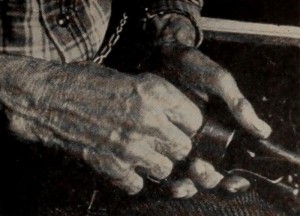
"A western, in color, about a drifter looking for work and then falling in love with his employer’s granddaughter." Church History Library.
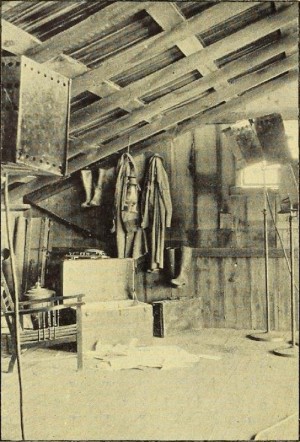
"Galleon Gold, 1600 ft., 16 mm., produced by the San Jose Players under the leadership of John C. Waterhouse, strikes a more sober note. This entertaining drama of the youth of a venerable Spanish family, who discover the treasure trove of the Conquistadores in time to save the family hacienda from the encroachment of the lime quarries, contains much good photography, a smooth continuity, experienced acting and first rate direction." Movie Makers, Sept. 1930, 569.
"Galleon Gold, 1600 ft., 16mm., produced by the San Jose Players, deserves special mention for its smooth flowing continuity alone. Although the difficulty of securing a lucid continuity is greatly increased in a longer dramatic picture, the producers of this film have achieved perfect clarity. This film was made during a summer vacation at a mountain ranch and it seemed at first that the lack of electric current for lighting would be an insuperable obstacle since the script called for many interior scenes. The problem was finally solved by a portable motor generator driven by a gas engine which, with proper lighting equipment, made ample illumination possible." Movie Makers, Dec. 1930, 788.
"Hearts Of The Golden West, 1200 ft., 16mm., filmed and directed by Theodore Huff and enacted entirely by youngsters under thirteen, is a delightful and whimsical burlesque of the Griffith melodrama of the days when titles were long and plots of villainy and intrigue laid in the great open places swept grandly to a moral conclusion in which "true hearts were united." In those days, producers did not hesitate to use a cyclorama or to place painted canvas scenery on an outdoor location. Mr. Huff revives all of the old technique, even to the dance hall set, with its inevitable balcony, and the fight to the finish at the edge of the cliff. Under his direction, the children act their parts with complete seriousness and, in some cases, with mimetic ability that would have given their prototypes pause." Movie Makers, Dec. 1931, 658.
"The Hunted deals with a pioneer or settler of the old West who seems on the prowl for some thing or person, but we are not told why. An Indian soon enters the scene and tries to shoot the settler, whereupon the settler fires back. The duel is short lived with a tragic outcome, after which the reason for the hunt is revealed" PSA Journal, Sept. 1966, 35.
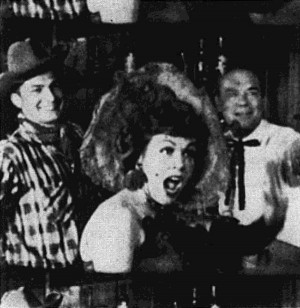
"The Nugget, as one might expect, is a nugget of gold, produced by the Los Angeles 8mm Club. This type of picture offers the desirable opportunity to engage many of the club members for production purposes as well as parts in the story. There are the old miner, his niece, her boy friend (who is also the sheriff), the Marshal, and the outlaws. Much of the story was filmed in the Ghost Town at Knott's Berry Farm outside Los Angeles. The interiors were filmed in the garage after suitable props had been constructed. The music and spoken word contribute atmosphere and understanding. An excellent Western picture" PSA Journal, Nov. 1957, 53.
Total Pages: 2